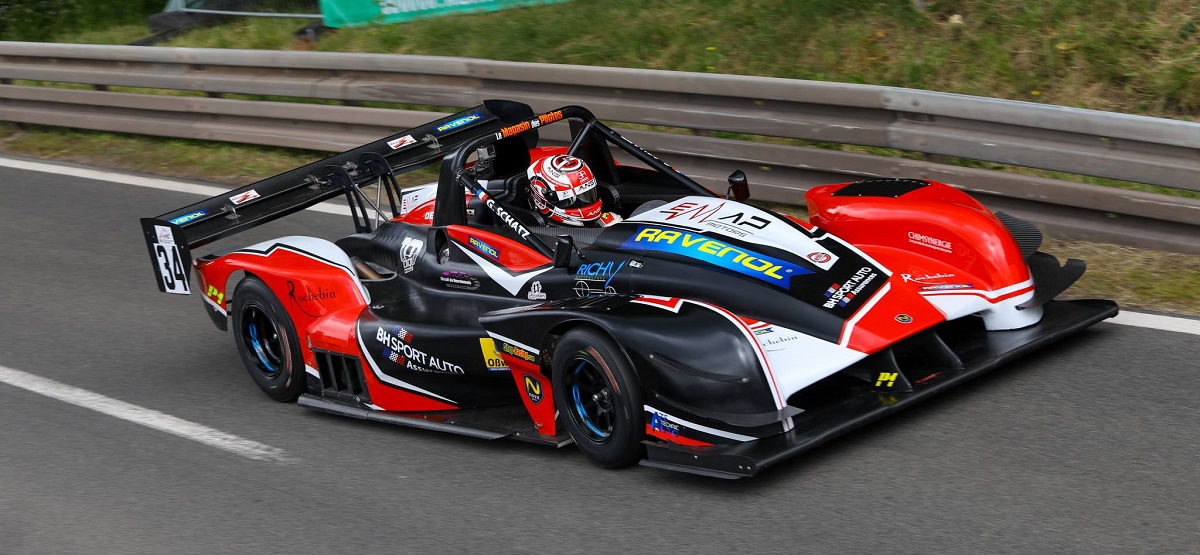The Peugeot 405 Mi16 : French icon of the 90s
By RobinB on 22 October 2024 MiscellaneousLaunched in 1987 and produced until the mid-90s, the Peugeot 405 Mi16 quickly established itself as a benchmark in the sports sedan segment.
With its 1.9-liter four-cylinder engine producing 160 horsepower, it stood out from its German and Italian rivals. But how did it compete with models like the Audi 80, the Mercedes 190, or the Alfa 155 Q4? Equipped with innovations such as dual overhead camshafts, it offered top-notch performance for its time while maintaining an attractive price.
Its value in today's used market proves that its appeal endures. Curious to learn more about the most dynamic version of the 405? Read on! 😉
405 Mi16: History and Design
Origin and Development
The Peugeot 405 Mi16 is the sporty version of the 405 from the PSA group. It was introduced in 1987. Designed in collaboration with the Pininfarina studio, renowned for its design expertise, the car stood out with its aerodynamic silhouette, with a drag coefficient (cx) of only 0.30. This aesthetic choice was not just about style: it also contributed to the vehicle's fuel efficiency and performance.
Under the hood, the 405 Mi16 housed a 1.9-liter multi-valve engine. This cutting-edge engine produced 160 horsepower, thanks in part to a Bosch Motronic injection system and an innovative cylinder head configuration inspired by the 405 Turbo 16s that competed in the Dakar Rally. This engine, paired with a gearbox borrowed from the 205 and 309 GTI but with redesigned gearing, allowed the Mi16 to stand out right from its launch with a strong touch of sportiness 💪
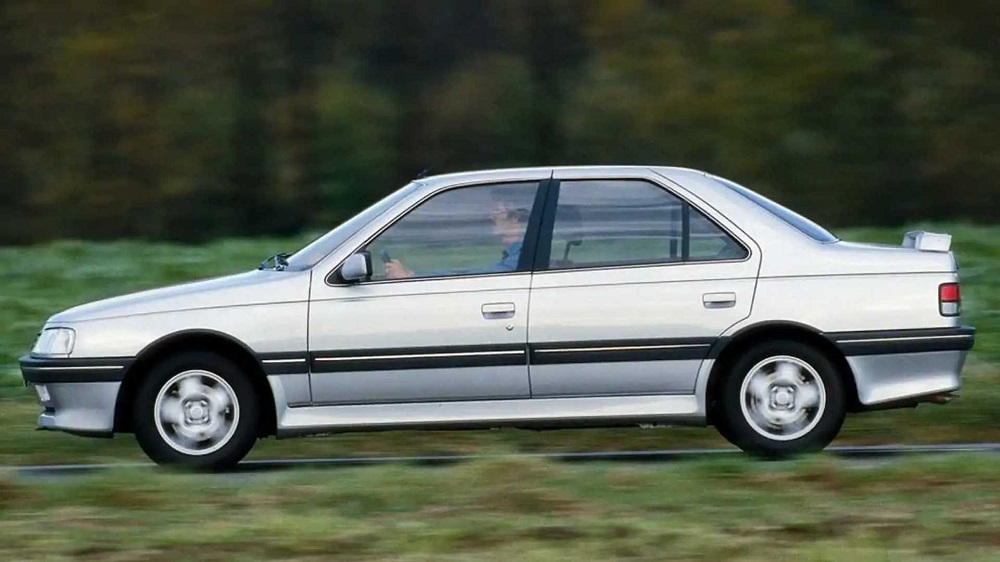
The Mi16 in its time
Upon its release, the Peugeot 405 Mi16 (for Multi Injection 16) entered a market dominated by formidable competitors. Rivals such as the Renault R21 2.0L Turbo Quadra, the Ford Sierra Cosworth, the Vectra Turbo 4×4, and the Alfa 155 Q4 were benchmarks for power and agility. In this context, the Mi16 had to find its way and prove its worth. With its 160 horsepower, it attracted attention, despite criticisms that pointed to power deemed insufficient compared to the chassis' potential or finishing touches that sometimes left something to be desired (especially on the Phase 1).
At the time, the trend was toward sporty sedans from German or Italian brands, with few French models standing out in this segment, except perhaps the Citroën BX GTI16S. The Mi16 broke this norm, establishing itself as a serious and competitive alternative.
Its design, the result of a collaboration with Pininfarina, gave it a striking look, complemented by technical innovations directly inspired by Peugeot's rally successes. The 405 Mi16 wasn't just following trends; it forged its own path, enriching Peugeot's heritage in the sports car sector.
Technical specifications of the Peugeot 405 Mi16
The 1.9-liter engine of the Peugeot 405 Mi16, known for its reliability and performance, is the heart of this model. This engine, producing 160 horsepower, stands out for its advanced technology, incorporating dual overhead camshafts and 16 valves. This configuration promotes better airflow and optimized combustion in the cylinders, essential for achieving such performance.
With a five-speed manual gearbox, the Mi16 boasts a top speed of nearly 220 km/h and can accelerate from 0 to 100 km/h in less than 8 seconds: impressive performance for its time. These figures reflect the effectiveness of the combination of mechanics and engineering. The Mi16 wasn't just a high-performance vehicle on paper; it offered a true driving experience.
The Mi16's handling is another of its strengths. The chassis, tuned to balance power and control, ensures reliable road holding, even at high speeds. The car is nimble in corners without sacrificing comfort. This dynamic behavior, combined with precise steering and solid grip, makes the Mi16 particularly enjoyable to drive, both in the city and on winding roads. The 405 is far from just a straight-line car. Its track record in competition proves it: we'll come back to that later in this article! 😉
Evolutions and variants of the 405 Mi16
The different phases
The Peugeot 405 Mi16 underwent several evolutions during its production. Initially launched in 1987, it quickly made a name for itself thanks to its performance and design.
Enthusiasm for the Mi16 was evident from its launch. Meanwhile, the impressive performances of Jacky Ickx and Ari Vatanen in the Paris-Dakar Rally with the 405 Turbo 16 highlighted the absence of an all-wheel-drive option in the Mi16 series. In response, Peugeot introduced an evolution of the Mi16 with four-wheel drive in the spring of 1989 to capitalize on these victories.
This model, named 405 Mi16x4, featured all-wheel drive with a viscous coupling system designed to optimize torque distribution to the most stable wheels, as well as a Torsen differential positioned at the rear for better handling. This version offered better traction and enhanced off-road capabilities.
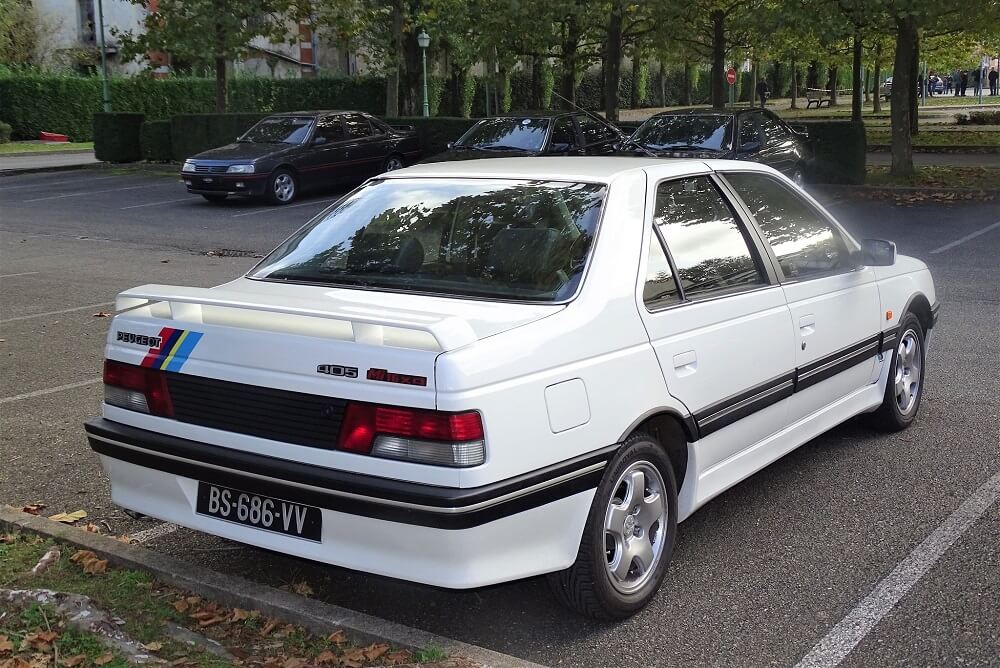
Another innovation was the introduction of hydraulic rear suspension equipped with an automatic leveling system, while the wheel diameter increased to 15 inches instead of the previous 14 inches. This model, however, was a commercial failure and was withdrawn from the catalog. Today, it is a true collector's item, highly sought after on the used market!
The following decade brought significant changes. In 1990, adjustments improved the finish and certain details, such as the steering wheel design.
The year 1992 marked a major milestone with a notable aesthetic refresh and the arrival of the Phase 2. The facelift mainly concerned the rear. The dashboard was completely redesigned, and the perceived quality took a leap forward. Under the hood, the changes were just as significant. The switch from a 1.9L engine to a 2.0L prepared the Mi16 for the introduction of a catalytic converter in 1993. However, this transition resulted in a slight drop in power, from 160 to 153 horsepower. Despite this, the Mi16 continued to be appreciated for its balance between performance and driving comfort.
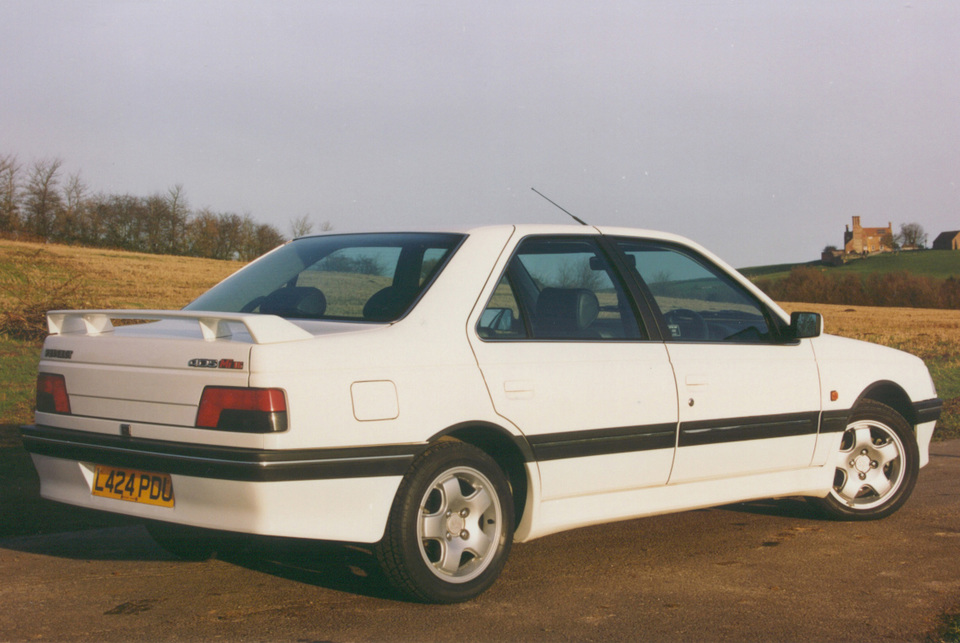
The arrival of the super-sporty 405 T16 in 1993 compensated for this loss with a turbocharger boosting power to 220 hp, but that's another story. A very expensive model, it arrived too late, at a time when sporty family cars were beginning to lose popularity, and BMW was launching the M3 E36 with its 286 hp! 😮
In the end, only 1,046 units of the 405 T16 were actually produced.
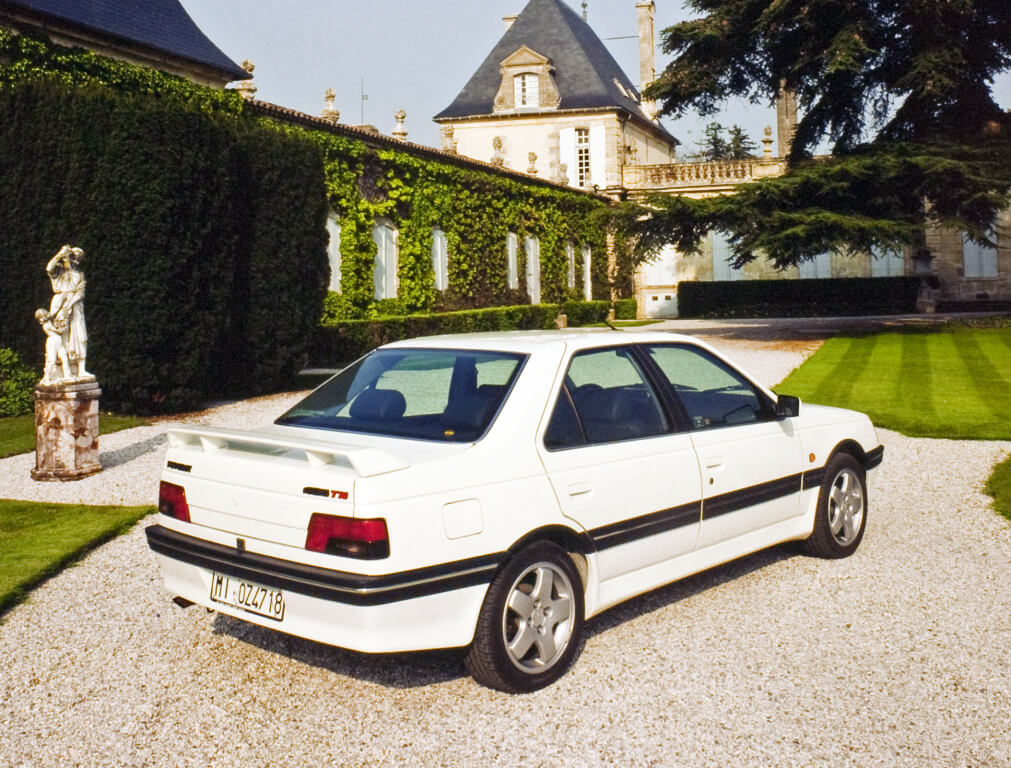
Production of the 405 Mi16 ceased in 1995, making way for the Peugeot 406. About 25,000 units of the Mi16 were sold across all versions. To put these numbers in perspective, it's important to note that the Peugeot 405, across all models, reached nearly 2.5 million units sold worldwide!
Special editions and variants
Two "Le Mans" special editions of the 405 Mi16 were produced. The first, reserved for the Swiss market in 1992 and part of the Phase 1, was limited to 500 units. The second, belonging to Phase 2 and launched in 1993, was exclusively for the French market, with a limited production of 150 units. This version featured a specific paint color (Lucifer Red), a rear spoiler, and unique wheels.
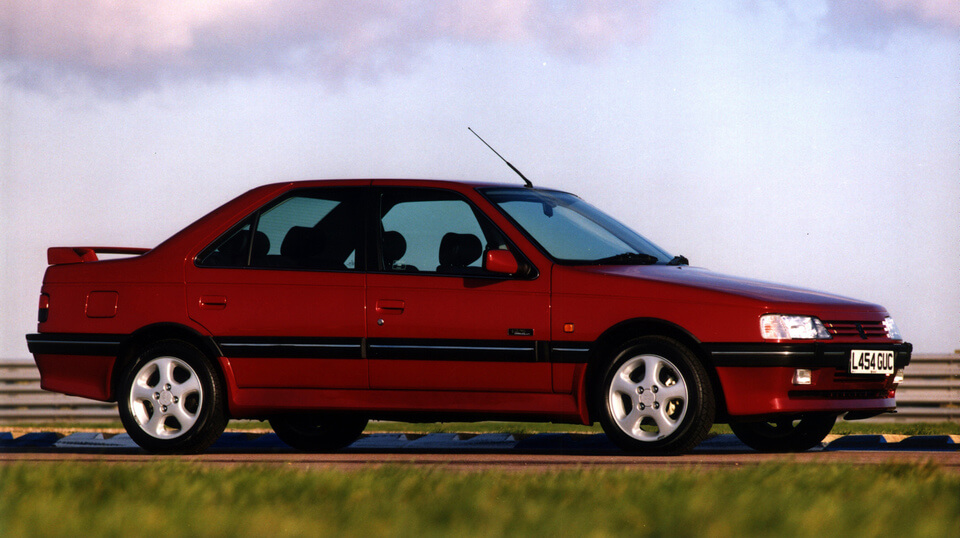
It is worth noting that just one year after its introduction in Europe, the Peugeot 405 Mi16 entered the American market. To meet local specifications, the car had its bumpers widened and side repeaters added to the fenders. A key change was the addition of a catalytic converter, reducing power to 152 horsepower. Despite better equipment than the European version, sales in the United States remained minimal.
The 405 Mi16 on the used car market
Current value and demand
The Peugeot 405 Mi16 continues to attract interest in the used car market. Prices vary widely, influenced by the car's condition, mileage, and maintenance history.
A model in good overall condition can be found for around €8,000, while a pristine vehicle can exceed €10,000. Rarer versions like the Mi16x4 or the "Le Mans" series may command a premium due to their rarity. Conversely, the 405 Mi16 Phase 2 models sell for less due to their lower performance.
For a used 405 T16, prices skyrocket! Given its rarity, the average price observed ranges from €30,000 to €45,000.
Buying a 405 Mi16 is an excellent alternative to its sister, the 205 GTI, which has become prohibitively expensive, with prices that continue to soar 📈
It's important to note that the overall condition and adherence to original specifications are crucial factors for valuation. Non-conforming modifications can affect the car's value. Enthusiasts often seek authentic examples that retain the essence and character of the original 405 Mi16. Unfortunately, many sporty 405s have been modified with varying degrees of success 😏
Demand for these classic cars remains strong, driven by a community of enthusiasts and collectors. The growing interest in models from the 80s and 90s, along with the "Youngtimer” and "Sleeper" trends, helps keep the 405 Mi16 a sought-after choice among vehicles from that era.
Buyer tips
For those interested in purchasing a used Peugeot 405 Mi16, a few recommendations are in order. First, prioritize vehicles that have been well-maintained over those with simply low mileage. A transparent maintenance history is a sign of reliability and can help avoid unexpected future expenses.
Inspect the authenticity of the parts and the vehicle's compliance with original specifications. Pay attention to the overall condition, including the bodywork, interior, and mechanical components, to ensure the car has been properly preserved.
Also, be mindful of the ABR, which has always been a source of issues with this model. Many owners have opted to disable it entirely or replace it with a conventional braking system.
Finally, do not underestimate the importance of a test drive. It will allow you to assess the car's handling, comfort, and responsiveness. A test drive can reveal details that may not be immediately apparent when the car is stationary.
The 405 Mi16 in competition
The Peugeot 405 Mi16 made a mark in the world of motorsport. Its robustness and versatility made it competitive in various disciplines such as rallies and hill climbs. It also excelled on the circuit.
At the wheel, renowned drivers like Laurent Aiello led the Mi16 to victory, notably winning the French Supertouring Championship in 1994, as well as the German Super Tourenwagen Cup in 1997. The 405 Supertourisme retained the production Mi16 engine, tuned to produce 290 hp at 8,900 rpm. It was equipped with a six-speed sequential Hewland gearbox. After significant weight reduction, its weight dropped to under a ton, down to 945 kg.
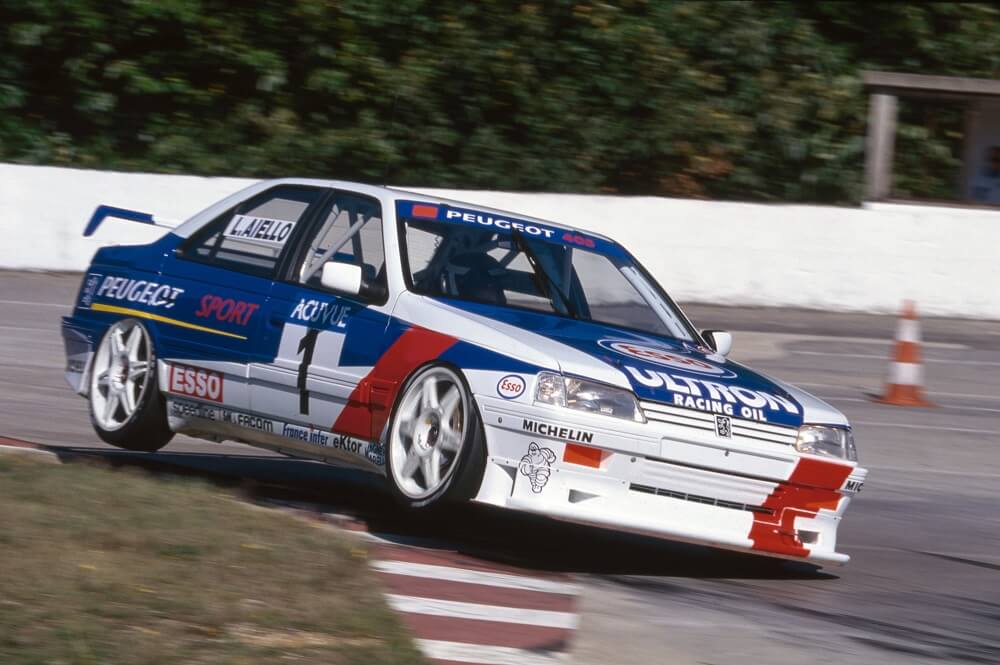
This period is often described as the golden age of motorsport, where the Mi16 raced against serious competitors on the circuits. Peugeot fielded its 405 Mi16, Opel bet on its Vectra GT, BMW brought the 318is, and finally, there was the Alfa 155 TS and the Astra GSi.
The French championship featured drivers such as Yvan Muller, Eric Hélary, Laurent Aiello, Philippe Alliot, Alain Cudini, and even Jacques Laffite. Quite a lineup, right? 🥳
After the Peugeot 309 GTI was retired, Peugeot also entered its 405 in the highly reputed BTCC championship from 1991 to 1995 through the official Peugeot Talbot Sport team, though without much success...
The 405 also shined at Pikes Peak, winning the Unlimited class in 1988 and 1989, even breaking the ascent time record. That record stood for several years until 1994! You surely remember that iconic video where Ari Vatanen drives with one hand while shielding himself from the sun with the other? 😎
But the 405 also excelled in rally raids, winning the Dakar Rally in 1989 and 1990, taking over from the 205 Turbo 16.

These motorsport successes not only validated Peugeot's technical choices and innovations but also helped build the 405's legend.
What legacy did the 405 Mi16 leave behind?
The cultural significance of the 405 Mi16
The Peugeot 405 Mi16 holds a special place in the automotive world. Its appearance marked a time when French sports cars were beginning to stand out. With its distinctive design and performance, it captivated a wide audience.
Its presence in various competitions and its success on the circuits contributed to its fame. These victories not only confirmed its capabilities but also served as a showcase for Peugeot's expertise.
Today, the 405 Mi16 is more than just a car; it is a reflection of a pivotal period in automotive history. Its enduring popularity speaks to its lasting impact.
The 405 Mi16 in popular culture and among enthusiasts
The Peugeot 405 Mi16 has secured a place in popular culture, becoming an icon for many enthusiasts. Its image is often associated with innovation and performance, reflecting the spirit of the era in which it was created. Online communities and car clubs frequently share anecdotes, maintenance tips, and stories about this model.
Classic car gatherings and exhibitions are where the 405 Mi16 continues to shine, attracting attention for its history and motorsport heritage. Its preservation by collectors speaks to its importance and the affection that car lovers have for it.
ℹ️ [2025 Update] This year, members of the Peugeot 405 Club will exhibit their cars at the Classics Days on the Nevers Magny-Cours circuit 🎉
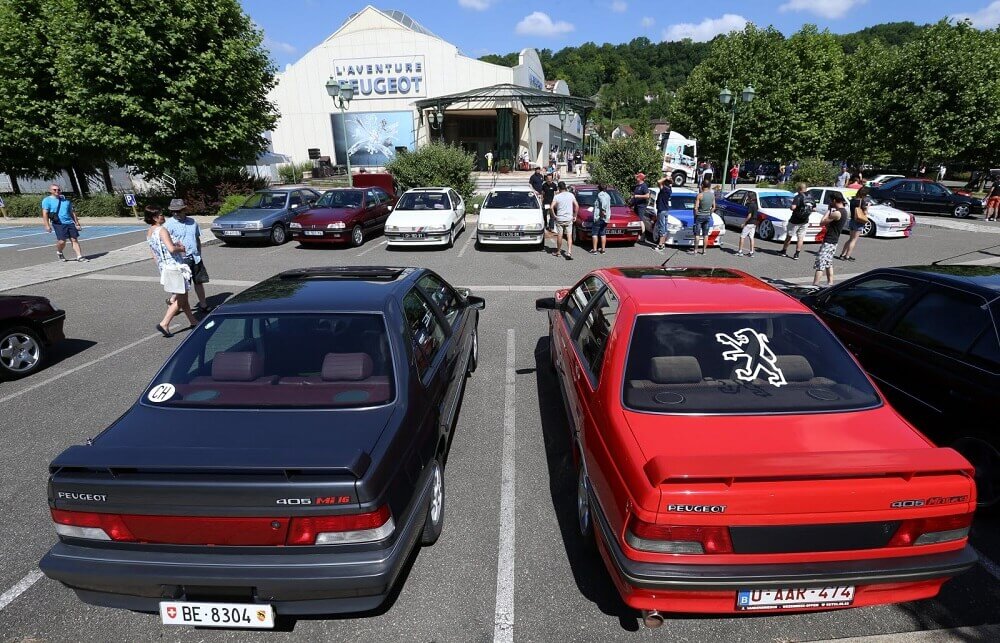
The 405 Mi16 continues to fascinate, not only for its technical qualities but also for what it represents: a period of boldness and creativity in the French automotive industry. Its looks, its victories, and its evolution over the years make it a prized topic of discussion and a source of nostalgia for those who lived through its glory years.
Conclusion
In retrospect, the Peugeot 405 Mi16 remains a memorable chapter in automotive history, symbolizing a successful blend of performance and elegance. Its contributions to motorsport, its lasting appeal among enthusiasts, and its cult status in popular culture highlight its significance well beyond its technical specifications. For those looking to relive the spirit of that era or discover the charm of a classic, the 405 Mi16 remains an option to consider.
If the adventure of owning a piece of this history entices you, we invite you to explore the used car listings available on our site. Who knows, you might find the 405 Mi16 that will add a touch of nostalgia and character to your daily life?



